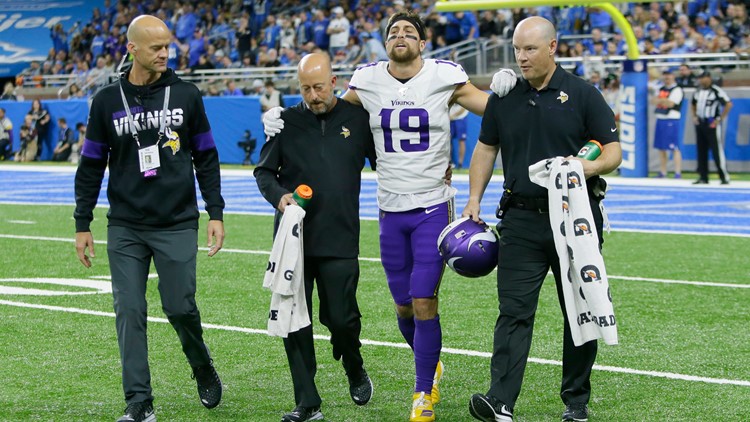GOLDEN VALLEY, Minn. — Want to see a frown on an NFL player's face?
Tell him he's playing on Thursday night.
Added to the schedule in November of 2006 at the height of the league's popularity, Thursday Night Football has become a hot-button issue between NFL brass and the players union. Teams that play on Sunday and then Thursday night have three days less recovery, and in recent years many players have blamed the late-week game for causing catastrophic injury. Then-Seattle Seahawks corner Richard Sherman blamed a short Thursday night turnaround for his ruptured Achilles tendon, and wide receiver Doug Baldwin said playing on Thursday after a Sunday game should be "illegal."
Saints QB Drew Brees unleashed the biggest barrage after six of his teammates were carted off the field during a Thursday night contest in 2017.
"It's 100 percent a product of playing on Thursday night," Brees said. "Do you understand what guys' bodies go through in a game? And then to have to turn around four days later and to play? Look at the injury studies: They're off the charts. They're off the charts. So is this smart as it pertains to guys' health and safety? No, absolutely not."
Data from a number of studies suggest that NFL players are no more at risk of catastrophic injury playing on short rest than on a regular 7-day cycle. That may be true, but former Vikings training and rehab staffer Nate Stier says shorter recovery times can wreak havoc with players who are dealing with soft-tissue injuries, like Adam Thielen and his pulled hamstring.
"It puts a strain on the medical staff," Stier recalls. "You only have so many hours before the next game starts. Players are coming in early, staying at night, we're sending interns to players houses (for treatment overnight)..."
Stier, co-founder of OSR Physical Therapy, says when a team is scheduled to play Thursday night football, players who would usually go home instead head straight to the training room following a Sunday game. “On a short week, instead of going home those guys are in treatment that day, controlling inflammation and working on pain control,” he explains.
Tools like cryogenic tubs, cupping, dry needling and acupuncture help minimize swelling and immediately begin healing muscle pulls and strains. Monday through Wednesday Injured players arrive at 6 a.m. for their first treatment, and are treated every hour on the hour until they go home at 10 p.m. Stier said the underlying goal was to "provide the optimal environment for the body to heal. This included controlling inflammation and pain, maintaining range of motion and strength, and making sure players got enough rest, allowing their body to heal as much as possible in a short amount of time."
The weekend warrior clients he currently treats sometimes ask him why they can't get back into action as fast as the pros. Stier laughs, and says there's something important everyone who is not on an NFL roster needs to remember.
"“These guys are genetic freaks," he says laughing. "Their bodies heal at a different rate than anyone else.”



